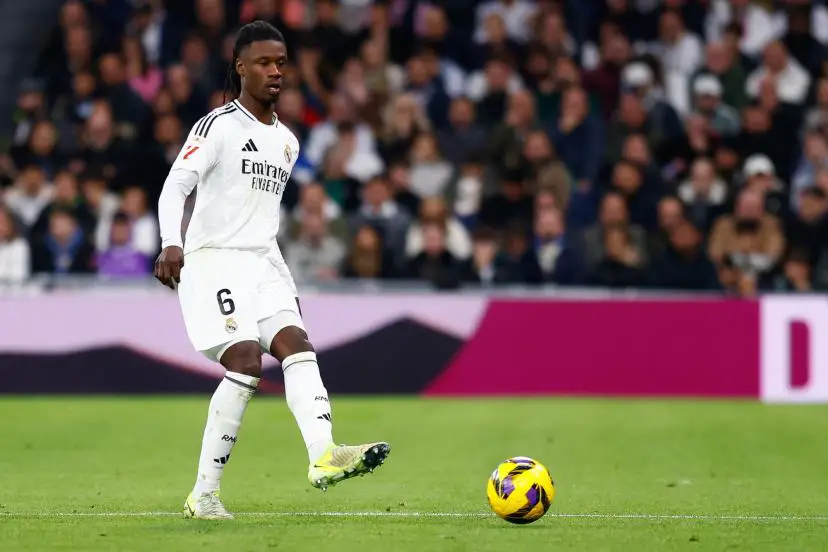
Real Madrid, one of the most prestigious football clubs in the world, has long been synonymous with the term “Galácticos.” This strategy, popularized in the early 2000s, involved signing the biggest global stars to build a team of superstars. However, recent seasons suggest a shift in the club’s transfer philosophy. Rather than focusing solely on high-profile signings, Real Madrid appears to be increasingly investing in youth development and promising young talents. This article explores Real Madrid’s evolving transfer strategy and examines whether the club is moving from a Galácticos approach to a youth-centric model.
The Galácticos Era: A Legacy of Star Power
The term “Galácticos” became famous during Florentino Pérez’s first presidency, starting in 2000. The club signed world-class players such as Luís Figo, Zinedine Zidane, Ronaldo Nazário, and David Beckham. This approach aimed to create a squad packed with global icons who could not only win trophies but also boost the club’s brand worldwide.
While this strategy brought significant success, including multiple UEFA Champions League titles and La Liga championships, it also had limitations. The focus on big-name signings sometimes led to unbalanced squads and issues with team chemistry. Moreover, the high transfer fees and wages put pressure on the club’s finances.
The Shift Towards Youth
In recent years, Real Madrid’s transfer strategy has shifted noticeably. The club has started prioritizing younger players with high potential over established superstars. This approach aligns with broader trends in football, where clubs seek to build sustainable success through player development and smart investments.
One of the key reasons for this shift is the emergence of talented youth players both within the club’s academy, La Fábrica, and from other clubs. Real Madrid’s academy has produced stars like Raúl González, Iker Casillas, and more recently, players like Vinícius Júnior and Rodrygo Goes. These players have become central to the team’s success and represent the future of the club.
Recent High-Profile Youth Signings
Real Madrid’s commitment to youth is evident in their recent transfer activities. The club has invested heavily in young players with enormous potential, aiming to integrate them into the first team gradually.
Vinícius Júnior, signed from Flamengo at just 16 years old, is a prime example. Despite initial challenges adapting to European football, Vinícius has become one of the most exciting wingers in the world, contributing significantly to Real Madrid’s attacking play.
Another example is Eduardo Camavinga, signed from Rennes at the age of 18. Camavinga’s versatility and maturity have impressed both fans and experts, and he is seen as a key component in Madrid’s midfield for years to come.

Youth Versus Galácticos: Benefits and Challenges
The youth-focused strategy offers several advantages. Firstly, investing in young talents is more financially sustainable. These players typically have lower initial transfer fees and wages compared to established superstars. Secondly, developing players internally or signing promising youngsters ensures that the club can build a cohesive team with a shared playing philosophy.
Moreover, nurturing young players can yield significant future transfer profits and enhance the club’s reputation for developing world-class talent. This approach also resonates with fans who appreciate seeing homegrown or young players succeed.
However, this strategy is not without challenges. Young players require time to adapt and develop, which can affect immediate team performance. There is also the risk that some prospects may not reach their potential, leading to sunk costs and missed opportunities.
Balancing Experience and Youth
Despite the shift towards youth, Real Madrid has not abandoned the Galácticos philosophy entirely. The club still signs experienced top players to complement the younger squad members. For example, the acquisition of players like Antonio Rüdiger and Aurélien Tchouaméni demonstrates a balanced approach, blending youth with experience.
This hybrid model aims to maintain Real Madrid’s competitiveness at the highest level while ensuring long-term sustainability. Experienced players provide leadership and stability, helping young talents integrate and perform under pressure.
The Role of Florentino Pérez and Club Management
Florentino Pérez remains a central figure in shaping Real Madrid’s transfer policy. His vision has evolved from prioritizing marquee signings to embracing a more balanced strategy. The club’s scouting network, data analytics, and focus on player development have all improved, supporting this transition.
Additionally, Real Madrid’s coaching staff plays a crucial role in nurturing young players and integrating them into the first team. Coaches like Carlo Ancelotti have shown trust in youth, giving young players opportunities to shine on big stages.
Conclusion: A New Era for Real Madrid?
Real Madrid’s transfer strategy is clearly evolving. While the Galácticos era defined a generation, the club now appears to be focusing more on youth development and smart investments. This shift reflects both practical considerations and changes in the footballing landscape.
By blending youth with experience, Real Madrid aims to build a sustainable and competitive team capable of winning trophies now and in the future. Whether this approach will fully replace the Galácticos model remains to be seen, but one thing is clear: Real Madrid’s commitment to nurturing young talent is stronger than ever.
For fans and analysts alike, watching this new chapter unfold will be fascinating, as Real Madrid continues to balance tradition with innovation in the pursuit of footballing glory.